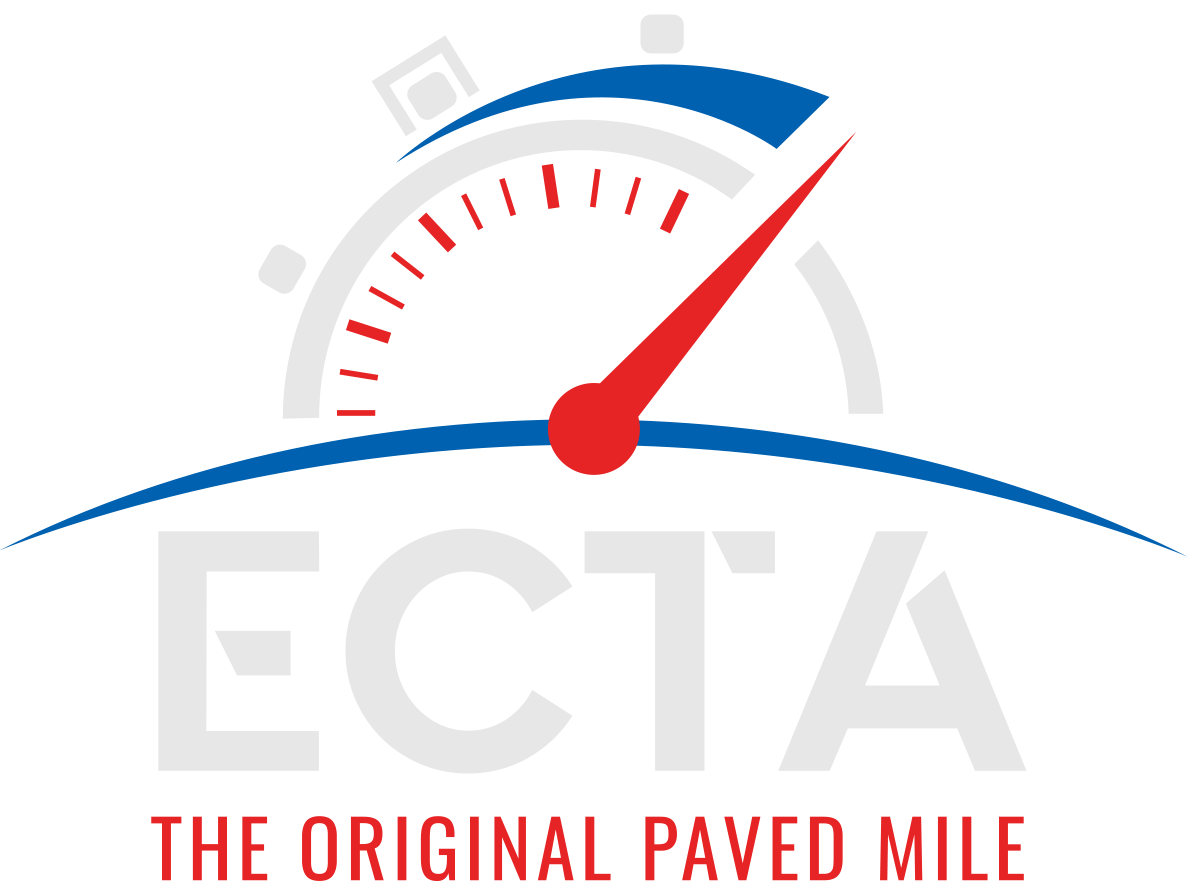HISTORY OF THE ECTA
Before Bonneville became the pre-eminent land speed racing venue it is today, Daytona Beach was the Land Speed Mecca. Sir Malcolm Campbell ran there, and many of the high speed records of the twenties and thirties were set on that eastern beach. Forty years ago you could still run cars and bikes on the hard sand around Daytona and Ormand Beach. In fact, Hot Rod Magazine ran a project Plymouth there back in the early 60s. Bonneville had several advantages to the beach. There were no tides to contend with, and it had a longer running surface. With all the California hot rodders looking for a place to race after World War II, and after the loss of Muroc to the Army, Bonneville was a wonderful alternative and became, with increased competition, the new Land Speed Mecca.
In the years hence, eastern racers couldn’t easily participate in speed trials without a 2,300 mile trip to Utah, and had to settle for circle track and drag racing. Daytona had grown up and had too many tourists to allow for free use of the beach, and there aren’t any dry lakes in the East to use as a substitute.
The East Coast Timing Association was formed by two Bonneville racers,Tom Sarda and John Beckett, with the idea of providing its members with a place to run speed trials in the eastern half of the United States. They wanted to model it after the El Mirage dry lakes events, as this was closer to what might be possible back East. With dry lakes being non-existent east of the Mississippi, they began to look for an alternative. After an exhaustive search, a seldom-used World War II air base runway was located in Maxton, North Carolina. The race course length, at one mile, was only slightly less than El Mirage. It had a hard concrete surface with considerably greater traction than the slippery salt of Bonneville, and with the elevation of 210 feet above sea level it produced similar speeds to El Mirage. With that, speed trials were re-introduced to the East.
Land speed racing is not just a long drag race. The rules for land speed racing are quite different and very liberal in comparison to other forms of motor sports. Safety is of primary concern, and the ECTA hosts some of the safest racing around
Brief overview of the Eaker Air Force Base
The history of the Eaker Air Force Base began when an army airfield was installed on 2600 acres of land during World War II. Then it was known as the Blytheville Army Airfield and was activated on June 10, 1942. This airfield was among many that were installed in the interior of the country during that time. Used as a flight school by the Southeastern Training Command until October 1945, the airfield was officially closed in 1946. The City of Blytheville was granted control of the land.
Having approved the transformation of the airfield to an air base, the Strategic Air Command (SAC) began operations on July 19, 1955. The airfield was now The Blytheville Air Force Base and would retain that name until it was changed in 1988 to honor Lieutenant General Ira C. Eaker. He commanded the Mighty Eighth Air Force in World War II.
While active, the base was home to B-57 bombers, B-52G bombers, and the KC-135A Stratotanker (aerial refueling aircraft). It saw quite a bit of activity and played a role in the Cuban Missile Crisis, the Vietnam War and Operation Desert Storm.
The useful life of the base came to a close on December 15, 1992. The cold war era was ending and the decision was made to retire the B-52G Bomber. The land was divided among several federal government entities along with state and local authorities.
Nowadays, the Arkansas Aeroplex is home to various businesses and organizations, not the least of which is the Blytheville International Airport. The runway is 11,602 feet long and 150 feet wide.



